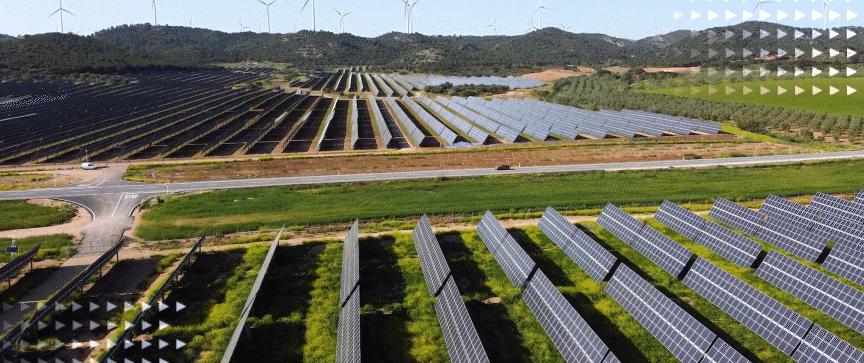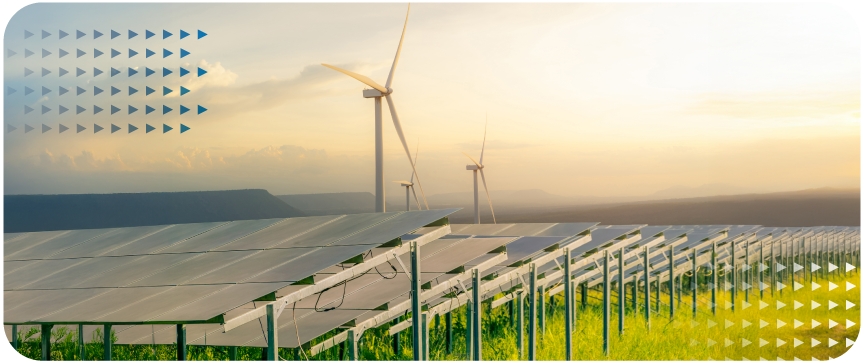On a continent with an abundance of natural resources and major structural challenges, understanding what renewable energy is becomes a fundamental question to find the most effective solutions toward a sustainable energy model. South America, with its climatic and geographic diversity, has a unique opportunity to lead the global energy transition.
However, generating clean energy is not enough—the real change occurs when that energy is managed with intelligence, efficiency, and safety. And that’s where technology plays a central role. Stay with us to learn more about what renewable energy is and its benefits.
What is renewable energy and what are its characteristics?
To understand what renewable energy is, we must recognize that it’s any source obtained from natural resources capable of regenerating continuously, such as the sun, wind, water, biomass, or the Earth’s internal heat. These sources do not deplete on a human timescale and, moreover, do not emit pollutants during their generation process.
South America has enormous renewable energy potential:
- Solar radiation in arid zones.
- Strong winds in elevated or coastal regions.
- Abundant water resources in many areas.
This allows for the consideration of a cleaner, more diverse, and resilient energy matrix.
What types of renewable energy exist? Learn about each source
Renewable energy comprises various sources with unique features:
Solar photovoltaic energy
Converts sunlight into electricity through photovoltaic panels, representing one of the clearest examples of renewable energy in action. This technology utilizes the photoelectric effect, where silicon cells directly transform solar radiation into electric current, without the need for moving parts or fuel.
In South America, countries such as Chile, Argentina, and Brazil are leading the installation of large-scale solar parks, taking advantage of excellent solar irradiation conditions. Photovoltaic energy offers unique advantages: modular installation, minimal maintenance, and the capability to generate electricity in both residential and large industrial projects.
Wind energy
Harnesses wind movement via wind turbines. Modern turbines can reach heights exceeding 100 meters, with aerodynamically designed blades to capture maximum wind kinetic energy and convert it into electricity using high-efficiency generators.
The region has exceptional wind corridors, especially in Argentina’s Patagonia, Brazil’s coastal areas, and Colombia’s mountainous zones. This energy source is characterized by its high generation capacity during peak demand hours and its complementarity with other renewables, particularly solar.
Hydroelectric energy
Generates electricity using the movement of water, being one of the most traditional answers to what renewable energy is. Hydroelectric plants harness the potential energy of water stored in reservoirs or natural river flows, converting it into mechanical energy via turbines and then into electricity through generators.
South America is home to some of the world’s most significant hydroelectric plants, such as Itaipu between Brazil and Paraguay, and the Paraná River complex in Argentina. In addition to large dams, small hydroelectric plants (PCHs) are emerging as ideal solutions for rural communities, offering consistent and reliable generation with minimal environmental impact.
Biomass and bioenergy
Converts organic waste into thermal or electrical energy. This process includes the direct combustion of forestry and agricultural residues, gasification of urban waste, and biogas production through anaerobic digestion of organic waste and wastewater.
South America’s abundant agro-industrial production generates vast volumes of waste that can be used for energy: sugarcane bagasse, rice husks, forestry residues, and livestock manure. This renewable source offers the additional advantage of being dispatchable, providing continuous energy regardless of weather conditions, while simultaneously contributing to sustainable waste management.
Geothermal energy
Utilizes underground heat to generate energy continuously from the Earth’s interior. This technology harnesses high subsurface temperatures—either via natural steam or hot water—to drive turbines or direct heating systems, offering a stable energy source 24/7.
Though less developed in South America than other renewables, countries like Chile, Colombia, and Ecuador have significant geothermal potential due to their location along the Pacific Ring of Fire. Geothermal energy stands out for its capacity factor above 90%, its minimal environmental footprint, and its ability to provide both electricity and direct heating for industrial and residential processes.
Benefits of renewable energy
The development of renewable energy in South America has more than just environmental impact. Understanding what renewable energy is also involves recognizing concrete social and economic benefits:
- Energy independence: Reduction in reliance on fossil fuels.
- Positive environmental impact: Decrease in greenhouse gas emissions.
- Sustainable economic development: Boosts to industrial innovation and job creation.
- Universal energy access: Increased energy access in rural or isolated areas.
- Modernization of the electrical system: Decentralization and modernization of power grids.
Integration challenges: What does renewable energy mean in complex systems
The growth of renewable energy sources presents new technical and operational challenges that require innovative solutions:
Main integration challenges:
- Natural variability: Renewable sources depend on changing weather conditions, causing intermittent generation.
- Demand management: The need to balance variable generation with constant energy consumption.
- Grid stability: Maintaining stable frequency and voltage with fluctuating generation sources.
- Adapted infrastructure: The requirement for smart grids capable of managing bidirectional energy flows.
Emerging technological solutions:
- BESS systems: Energy storage through Battery Energy Storage Systems is consolidating as a crucial tool.
- Hybrid microgrids: Intelligent integration of multiple renewable sources with conventional backup.
- Predictive management: Use of artificial intelligence to anticipate generation and consumption patterns.
- Demand response: Programs that adjust consumption according to renewable energy availability.
In various South American countries, there’s a growing demand for BESS solutions, particularly in those with strong expansion of solar or wind sources. This demonstrates how storage is no longer simply a complementary technology but a necessary condition to fully exploit the region’s renewable potential.
Intelligent technology: The future of renewable energy
For renewable energy to operate efficiently and reliably in practice, systems are needed that allow:
- Hybrid management: Integration of renewable sources, storage, and conventional backup.
- Smart monitoring: Real-time oversight of system status and performance.
- Advanced automation: Decision-making based on generation conditions, demand, and energy priorities.
- Guaranteed scalability: Ensuring adaptability according to the size and complexity of the project.
What is renewable energy for South America’s future?
South America has everything required to move toward a more sustainable energy model: natural resources, technical knowledge, and innovation capacity. But the real leap will occur when these elements are integrated through intelligent technology, strategic planning, and long-term vision.
Understanding what renewable energy is is just the first step. The next is to implement it efficiently, safely, and sustainably. At Servintel, we have been developing solutions for over 45 years that enable intelligent operation of renewable energy. Because we believe the energy future has already begun, and we are ready to accompany it.
Start your renewable energy project with Servintel
At Servintel, we develop technological solutions to facilitate this energy transition, tailored to industrial, rural, and critical infrastructure environments across the region. Want to learn how to intelligently manage renewable energy, storage systems, and conventional generation? Explore our hybrid microgrid management solutions today!
At Servintel, we believe the transition to hybrid microgrids is an essential step for companies seeking to reduce their dependence on conventional energy sources. Our solutions efficiently combine renewable energy sources—such as solar panels and storage systems—with conventional generators, optimizing the energy balance.
Do you have a project or inquiry? Our technical team is ready to help you integrate renewable energy securely, efficiently, and at scale. Contact us here!






